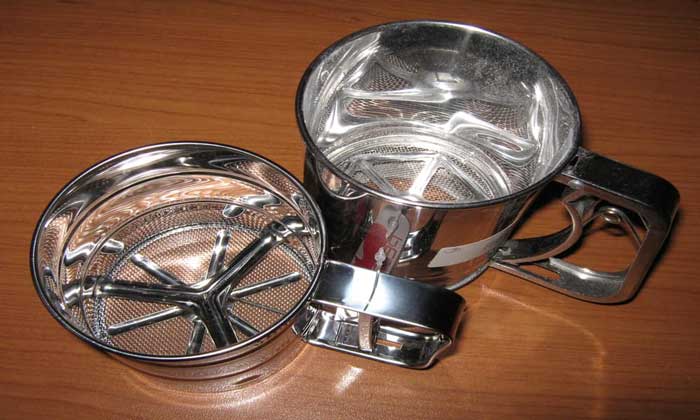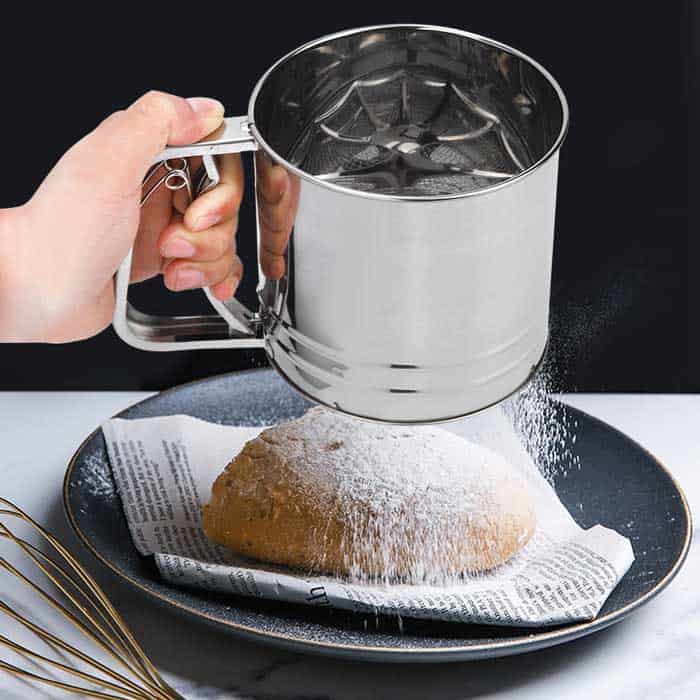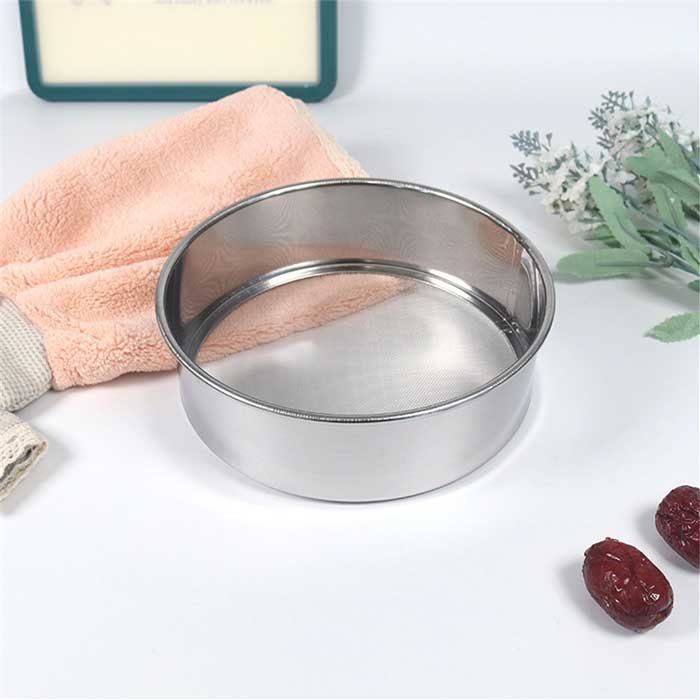In the world of baking, sifting can be considered quite a crucial element. You see, sifting is the process of separating the big lumps of flour and helps you turn them into much finer particles, which authorizes you to make dishes with great ease and precision because of efficient mixing.
However, if you want to ensure that your dishes taste amazing, then you need to know how to do it. And for that, we have come up with this article. Here you shall find information on how to clean flour sifter, how to use them, what is the need for sifting flour, and so much more.
Hence, we suggest that you keep on reading to the end.
What Is Flour Sifter?
We have already stated before the process of sifting. So, as that is clear, here you shall find the description of what is a flour sifter.
Well, a flour sifter is a metal contraption with two layers of wire screens and a sifting mechanism. Generally, the flour is poured into the first screen, which allows it to slide down. After passing the first screen, it is held there! Now, there is a handle on the side of the flour sifter.

When you turn that, the flour is pressed, which passes it down the second screen, which authorizes the flour into smaller particles, and in turn, allows effortless mixing.
How Can You Clean Flour Sifters?
If you want your flour sifters to keep giving you the best performance, then know how to maintain them is an important thing. Now, for many, that is not a simple task. That is why we have composed this section, which contains step-by-step instructions on how to maintain a sifter.

Therefore, let us begin!
Step-1 (Detergent Water Treatment)
First and foremost, you need to ensure that your sifter is germ and bacteria-free. Now, to do that, you need to wash it, which is quite an effortless task. However, rinsing it with plain water might not be enough as microbes can be quite stubborn. Therefore, the perfect solution is to wash them using soapy water.
So, the first thing you do is pour some soap or liquid detergent into your sifter. Next, turn on your tap and hold the item under the tap. When the water from the tap flows through the sifter and the detergent, it will mix and ensure that all the contaminants are eradicated.
Step-2 (Thoroughly Rinse)
Once you are done with the second phase, do not put the sifter away. You see, some of the detergents might be left behind, which could alter the taste of your dishes and can even be harmful in some cases. Therefore, you need to ensure that none of the soapy substance is left behind.
For that, we suggest that you hold the sifter under the tap for at least 15 minutes. If you want, you can keep it there for longer.
You see, rinsing it will ensure that all the detergent mixes with the water and gets carried away.
Step-3 (Leave It to Dry)
Once you are satisfied with the duration (of how long you kept the sifter under your tap), it is time that you leave it aside to dry. Flour is extremely sticky when it comes in contact with water or any kind of liquid. Hence, abstaining from using it after cleaning might not be a smart idea.
Are you wondering for how long should you leave it to dry? Well, we suggest that you leave it to dry somewhere for at least three to four hours before re-using it. Thus, you have to ensure that the sifter is completely dry!
How to Get Rid of the Lumps
In order for your sifter to provide you with fine particles of flour, you need to ensure that you have taken care of the lumps. To get rid of the chunks, the first thing that you have to do is brush the residuals out. You can use a toothbrush to do that. Just rub the insides of the sifter, and that should break the lumps easily.

Once you are done with that, you rinse the insides with warm water. The warm water further breaks the flour lumps, and hence, makes it effortless to clean the sifter. There is another way to get rid of the lumps, and this method is used by chefs in high-end restaurants.
They use compressed air devices to eject high powered air, which makes the entire process less strenuous. Nevertheless, it is quite an expensive method.
Conclusion
Sifters are quite an essential tool in the world of culinary. They ensure a smoother and consistent blend and ultimately elevates the over texture and taste of your dishes. So, if you want your sifters to keep on giving you top-notch performance, then knowing how to clean a flour sifter is crucial.

